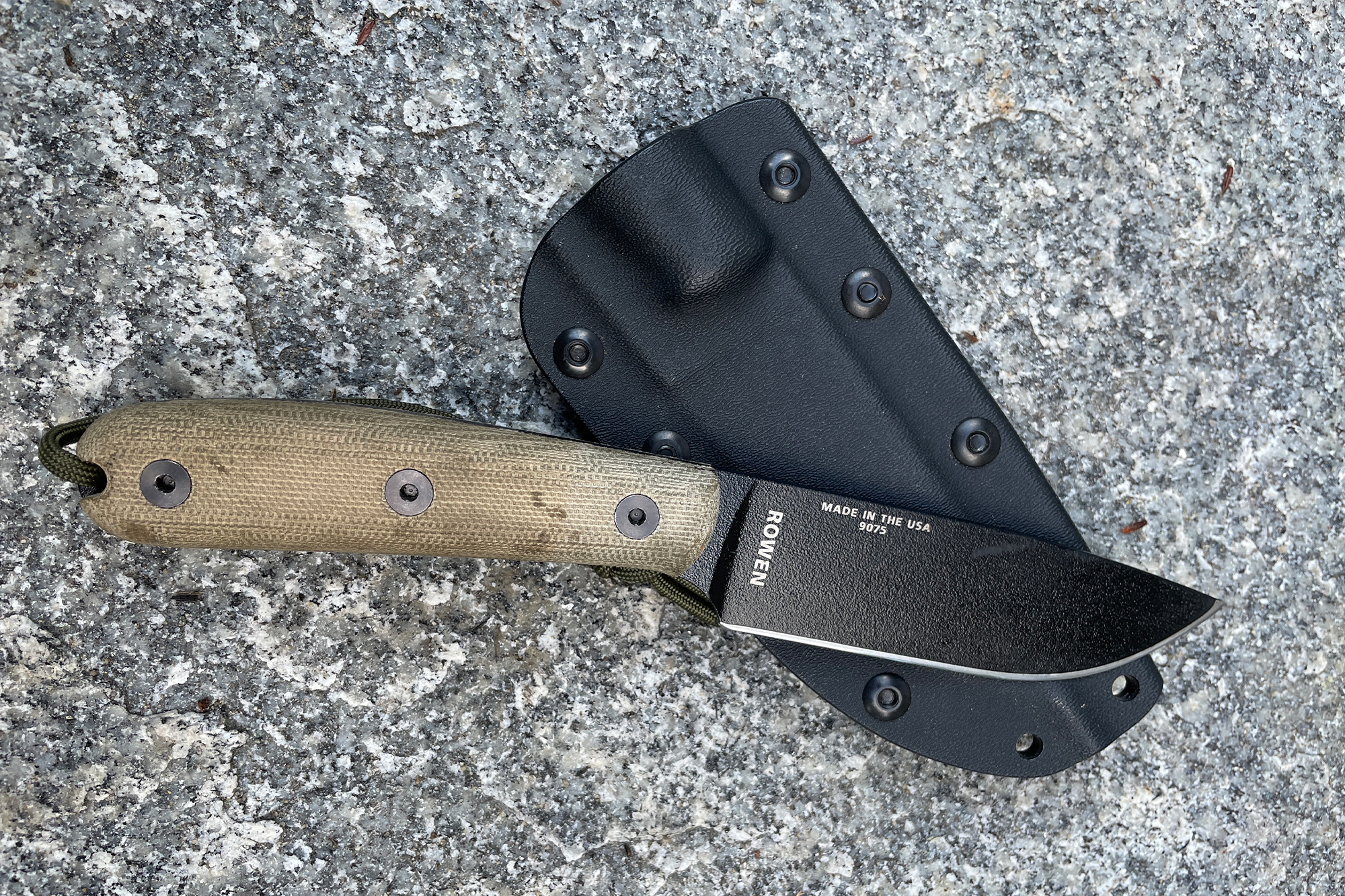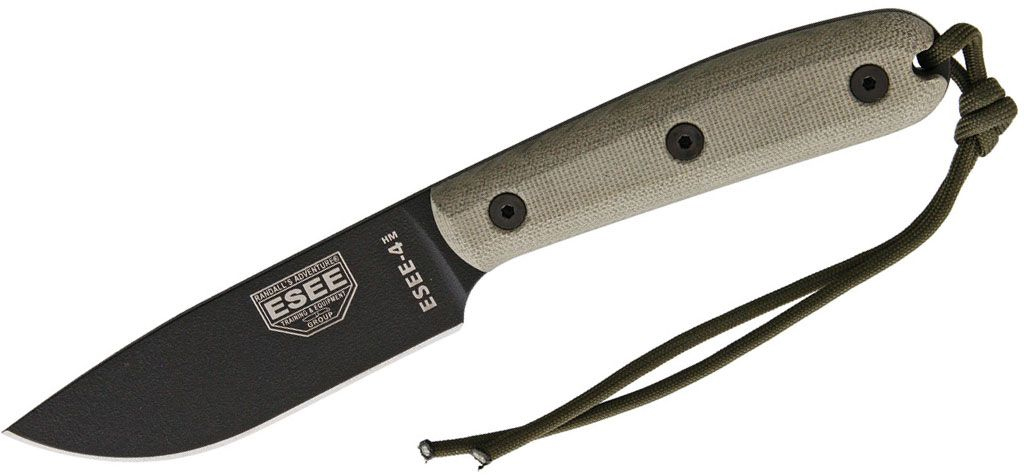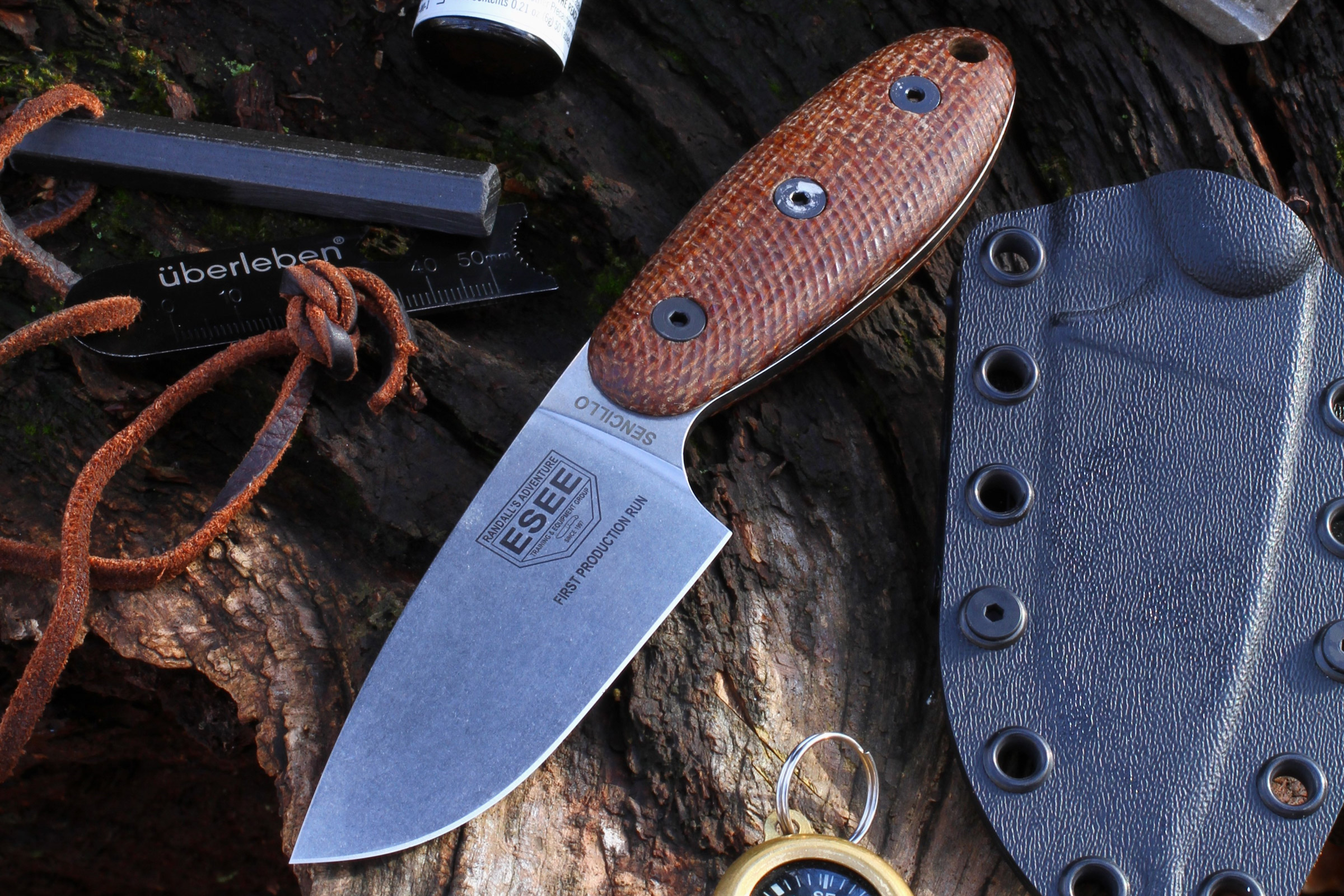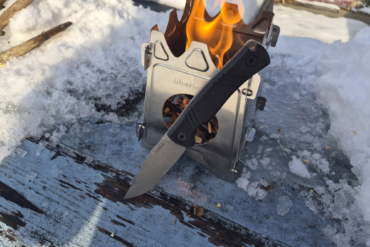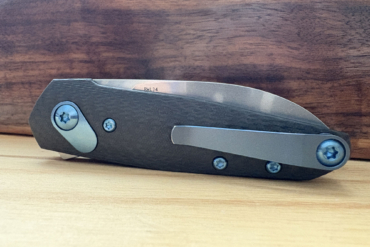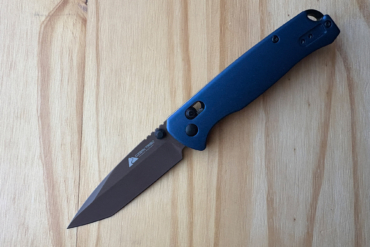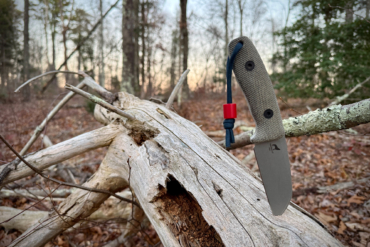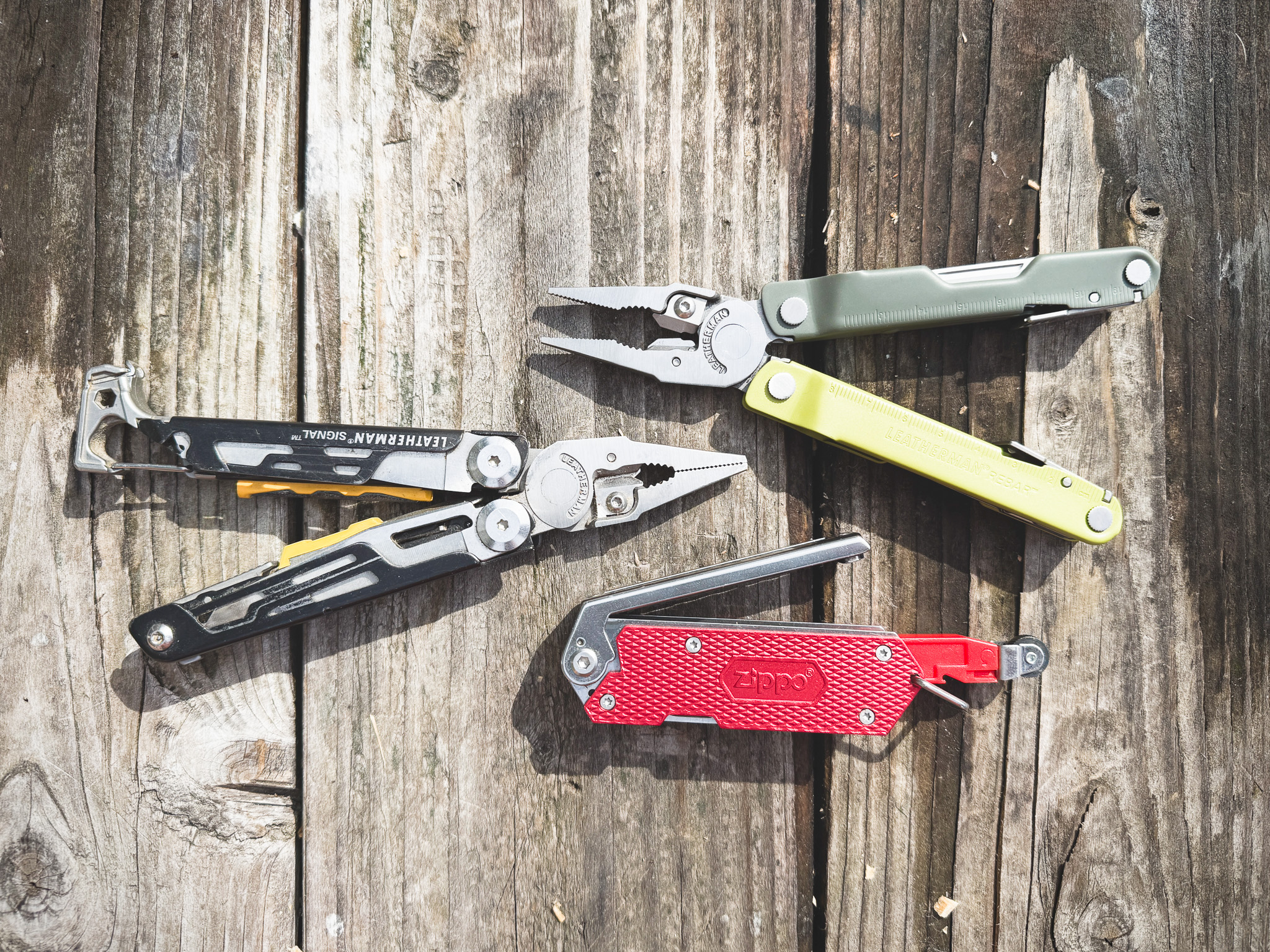Hitting the market at just the right price, ESEEs offer good alternatives to KA-BAR’s BK series. They are a bit more refined with nicer touches, and they come in a million different varieties, all with the same bones.
From the Candiru to the Junglas, there is an ESEE in every size range with coated 1095 steel, Micarta or G10 for the handles, and a sheath. I have used many of them and reviewed a few on my own site.
For all of the variety, though, one knife — the ESEE 4HM — stands out as one of the best knives on the market. If you want one and only one fixed blade, this should be your choice. It can do everything.
In short: I have owned this knife for years, but the first impression wasn’t glamorous. It’s a hard-use thumper, not a watch-like custom. And while that might sound like a slight, it is not. Its humble presentation fits its design. Its rough coating and coarse Micarta give it a sense of being battle- or wilderness-ready. This is the fixed-blade knife distilled to its perfect essence — stout, simple, and incredibly effective.
- Steel: Coated 1095
- Grind: Full flat grind
- Blade length: 4.38”
- OAL: 8.88”
- Weight: 7.7 oz. (knife only)
- Price: $120
- Country of origin: Made in the USA
Pros
- Easily sharpenable, even by novices
- Superior Kydex sheath
- Simple and superior handle design
- Coating guards against rust
- Full tang design using hardy materials can take an absolute beating
- Ridiculously great warranty
Cons
- Avoid the leather sheath
ESEE 4HM Fixed-Blade Review

Excellent Sheath
There are two sheath options for the 4HM — a leather sheath and a Kydex one. While, of course, leather sheaths can be truly amazing, at this price point, they aren’t great.
Fortunately, the Kydex sheath here is amazing. It is a taco-style sheath (meaning a single sheet of kydex folded over on itself) with a metal belt clip. Taco-style sheaths are just as effective but tend to carry a smaller footprint. It locks in place, carries the knife without a rattle, and has a drain hole.
In the years I have owned the 4HM, it has never fallen out of the sheath nor has it popped off my belt. It’s pretty comfy, too; on more than a few occasions, I inadvertently wore the knife into the hardware store or while driving.
Owning fixed blades up and down the price scale, this sheath is simply remarkable. You won’t find a knife that costs $100 with a Kydex sheath this nice anywhere else.
Materials & Design
The difference between the 4HM and a typical ESEE 4 lay in the handle. Instead of a complex set of curves and cuts, the 4HM has a broomstick-style handle. This simple choice is a great one, as it allows the knife to be used in a number of different positions, something that is quite handy for an outdoor knife.
I can chop food with a chef’s pinch grip, stab into material with an ice pick grip, or use it while doing chest lever cuts. There are no hotspots or pinch points. And the slight bulge in the middle of the handle also makes it work better with your hand’s anatomy than a complex handle (see this amazing explainer for more about knife handles and hand anatomy).

The blade stock is 3/16-inch, which is a bit thick, but the full flat grind makes up for it. A more modern steel, like 3V or Magnacut, would allow for a thinner blade of equal durability, but that would add cost and reduce the 4HM’s sharpenability. Given the price and intended use, this makes for a good tradeoff. Over the years, it has proven the right design choice.
ESEE 4HM: Field Tested
The 4HM has been on probably a dozen camping trips over the years and it has served me well. It handles fire prep tasks with aplomb — small enough to make feather sticks but still decent at batoning.
With a blade just over 4 inches, it’s not great at batonning, but I am much more concerned it will get stuck than break.
I’ve also been pressed it into food prep tasks. I keep most of my knives shaving sharp, and this allowed it to flex into roles like filleting steaks and chopping onions and mushrooms. Obviously, it is not a kitchen knife, but it is surprisingly good around food.

The majority of the time, I use this knife around the yard. I live in a more rural part of Massachusetts, and there is a lot of random chopping tasks that come up. Here, the 4HM excels.
Felling wrist-thick bushes and trees is easy and delimbing them is one of my favorite tests of a knife’s edge geometry. The 4HM pops off branches with ease. I even used the 4HM when taking down a large, old play structure, doing that thing you are not supposed to do with a knife (prying). Thanks to the tough 1095 and the full-tang construction, I didn’t worry.
Long-Term Wear
A few notes on how the knife wears, given that this is a long-term review. The Micarta starts out fuzzy and rough but over time became more slick and worn in.
It’s still quite grippy but not a Velcro-like surface. Second, because the 1095 is about as easy to sharpen as it gets, you can keep the 4HM running sticky sharp for years. I use a Ken Onion sharpener from Work Sharp, and over time, the actual cutting bevel has transformed into a convex edge. It is actually sturdier because of this.
Put another way, years of use have made this knife better than when it came out of the box. That is truly great design.
One more quick note about the 4HM — like all ESEE fixed blades, it is backed by the best warranty in the knife business. If you break it, the brand will replace it. So long as you ship back the broken knife, ESEE will not question your warranty claim and will replace the blade.
If the blade is out of production, ESEE will replace it with an equivalent model. Smash and bash to your heart’s content.
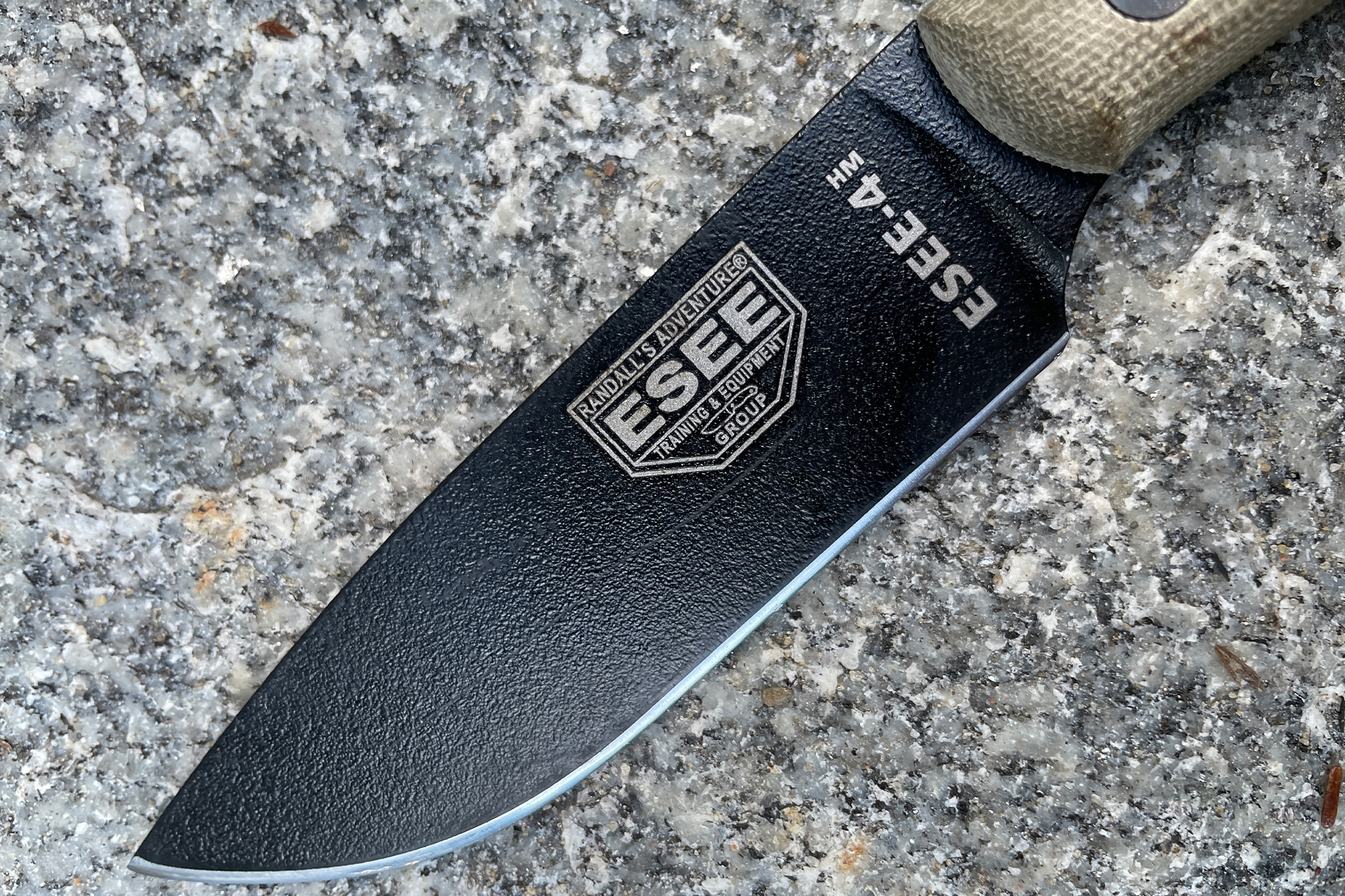
Conclusion
I own a lot of very expensive fixed blades and invariably, I come back to the 4HM. It is a truly superior tool, a knife with no design blubber whatsoever.
It works because even though it is simple, its simplicity is guided by true design insights. The sheath is a masterpiece and though the steel is old, it really suits the knife’s purpose well.
Very few products in our consumerist world get better with age — this is one of them.
